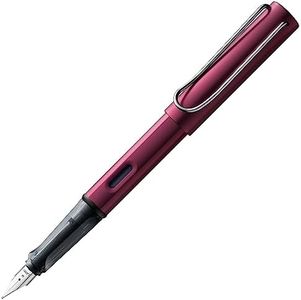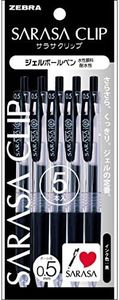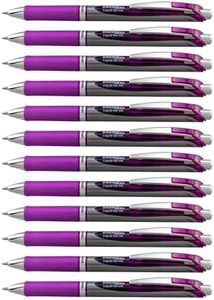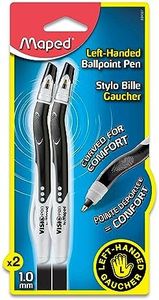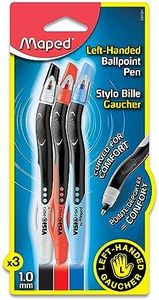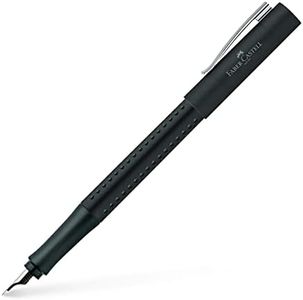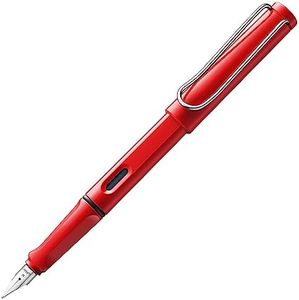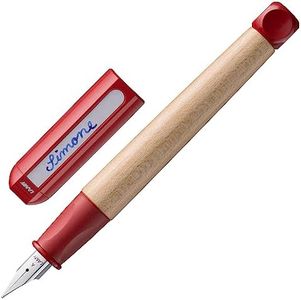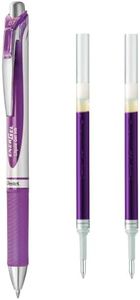We Use CookiesWe use cookies to enhance the security, performance,
functionality and for analytical and promotional activities. By continuing to browse this site you
are agreeing to our privacy policy
10 Best Pens For Left Handers
From leading brands and best sellers available on the web.Buying Guide for the Best Pens For Left Handers
Choosing the right pen as a left-hander can make a big difference in how comfortable and neat your writing turns out. Left-handed users face particular challenges like ink smudging, uncomfortable grips, and awkward hand positions while writing. Knowing what features to look for will help you find a pen that works smoothly, writes cleanly, and feels just right in your hand.Ink Drying SpeedInk drying speed refers to how quickly the ink sets on the paper after writing. For left-handers, this is crucial because your hand moves over the line right after writing it, increasing the risk of smudging fresh ink. Pens with fast-drying ink help prevent smears and messy handwriting. You’ll generally find gel, rollerball, and fountain pens with varying drying times; ballpoints typically dry the fastest. If you're a fast writer or notice that your writing often smears, look for pens explicitly labeled as quick-drying or suited for left-handed writers.
Grip Shape and ComfortThe grip of the pen is the area where your fingers hold it while writing. This shape and texture can dramatically affect comfort, especially for left-handers, who sometimes end up holding pens at awkward angles to see their writing or avoid smudging. Some pens are designed with ergonomic grips or have triangular/soft rubber sections to make holding them more relaxed and natural. If you often feel strain or discomfort while writing, or if your writing position feels awkward, try a pen with a specially designed grip intended for left-handers.
Nib or Tip TypeThe nib or tip of a pen determines the kind of line it makes and how smoothly it writes. Fine tips work well for neat, precise writing but can scratch or catch on paper, while broader tips lay down more ink and can be smoother. For left-handers, a medium or slightly broader tip can help create smooth lines without the pen digging into the paper, but if you prefer detailed writing, a finer tip might suit you better. Consider how much pressure you use and how much control you want over your handwriting when choosing the tip size.
Pen Angle CompatibilityLeft-handed writers often hold their pens at a different angle compared to right-handers, sometimes ‘hooking’ their hand above the line or writing more sideways. Some pens, especially certain fountain pens or calligraphy pens, are made for a specific angle and may not work well for left-handed grip styles. Make sure to choose a pen designed to write smoothly no matter the angle you naturally use. Test if you can maintain your usual writing posture without interruption or skipping.
Smudge ResistanceSmudge resistance is about how well ink stays put instead of spreading or smearing when touched—even after a short time. This is especially important for left-handers, since their hand often moves across lines just written. Some pens use special ink formulas to resist smudging even in humid or sweaty conditions. If you’ve struggled with smudges on your notes or hands, focus on pens that advertise smudge-proof ink or are recommended for left-handed use.
Refillability and MaintenanceSome pens are disposable, while others can be refilled or reused, which can be more economical and environmentally friendly. If you write a lot, refilling might be more convenient and allow you to stick to an ink that works well for you. Make sure the replacement cartridges or ink refills are also suitable for left-handed needs, especially in terms of drying speed and smudge resistance.


